Two companies are hoping to move the quantum industry in two different directions.
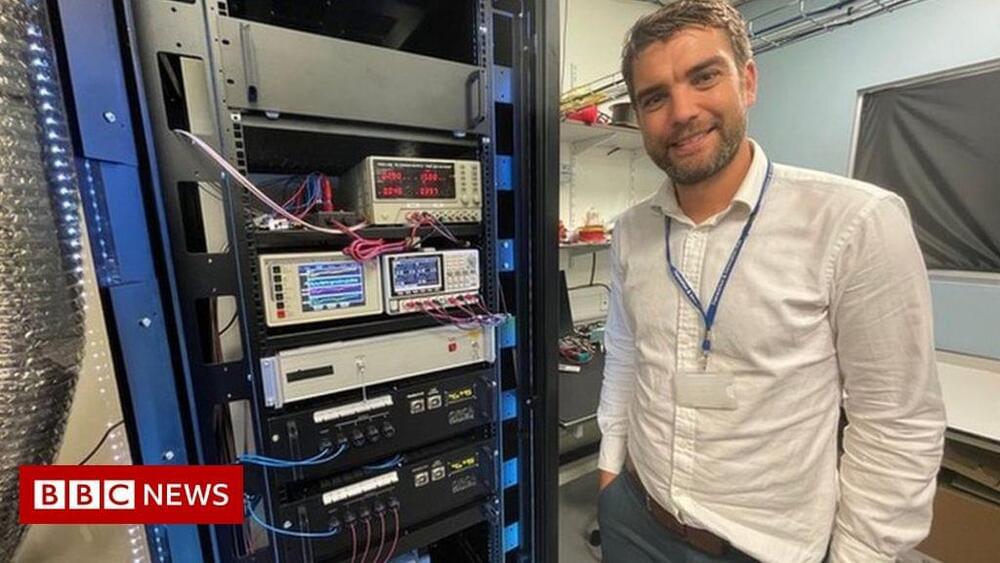

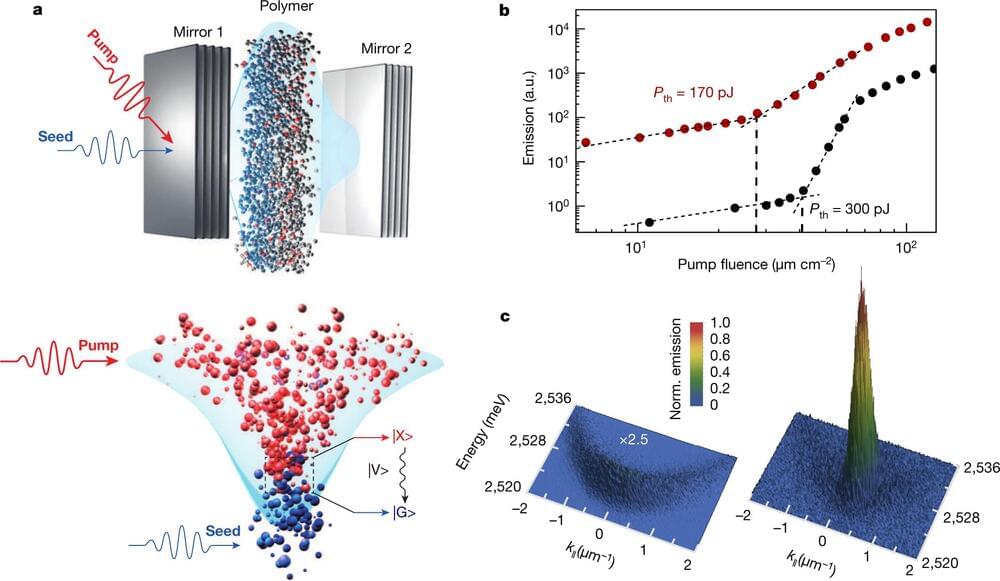
Nonlinearity induced by a single photon is desirable because it can drive power consumption of optical devices to their fundamental quantum limit, and is demonstrated here at room temperature.
The recent progress in nanotechnology1,2 and single-molecule spectroscopy3–5 paves the way for emergent cost-effective organic quantum optical technologies with potential applications in useful devices operating at ambient conditions. We harness a π-conjugated ladder-type polymer strongly coupled to a microcavity forming hybrid light–matter states, so-called exciton-polaritons, to create exciton-polariton condensates with quantum fluid properties. Obeying Bose statistics, exciton-polaritons exhibit an extreme nonlinearity when undergoing bosonic stimulation6, which we have managed to trigger at the single-photon level, thereby providing an efficient way for all-optical ultrafast control over the macroscopic condensate wavefunction. Here, we utilize stable excitons dressed with high-energy molecular vibrations, allowing for single-photon nonlinear operation at ambient conditions.

Topological quantum computing is probably one of the most promising fields of the future which would greatly boost machine learning that already employs combined elements of cognitive, evolutionary and neuromorphic engineering. Post-singularity artificial superintelligence could have complete access to their own source code — a level of self-awareness presently beyond human capability. That would allow the post-singularity syntelligence to create myriad virtual worlds right out of its own superimagination. We can’t completely rule out a possibility that we’re part of that simulated reality right now. At the same time, we ourselves are moving towards the point of Theogenesis where we can rightly call ourselves cybergods.
#THEOGENESIS #CyberneticTheoryofMind #QuantumCosmology #ComputationalPhysics #posthumanism #cybernetics #theosophy #futurism
We are moving towards the point of Theogenesis – engineering our own godhood, self-divinization – where we can rightly call ourselves cybergods.
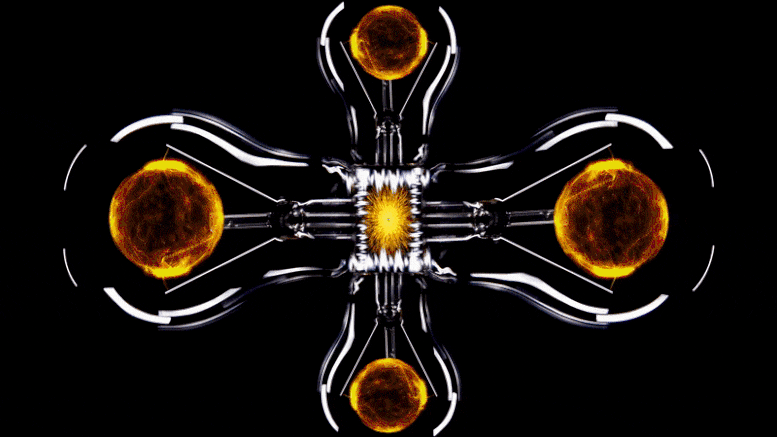
In a new study from Skoltech and the University of Kentucky, researchers found a new connection between quantum information and quantum field theory. This work attests to the growing role of quantum information theory across various areas of physics. The paper was published in the journal Physical Review Letters.
Quantum information plays an increasingly important role as an organizing principle connecting various branches of physics. In particular, the theory of quantum error correction, which describes how to protect and recover information in quantum computers and other complex interacting systems, has become one of the building blocks of the modern understanding of quantum gravity.
“Normally, information stored in physical systems is localized. Say, a computer file occupies a particular small area of the hard drive. By “error” we mean any unforeseen or undesired interaction which scrambles information over an extended area. In our example, pieces of the computer file would be scattered over different areas of the hard drive. Error correcting codes are mathematical protocols that allow collecting these pieces together to recover the original information. They are in heavy use in data storage and communication systems. Quantum error correcting codes play a similar role in cases when the quantum nature of the physical system is important,” Anatoly Dymarsky, Associate Professor at the Skoltech Center for Energy Science and Technology (CEST), explains.

Electrons in two-dimensional hexagonal materials have an extra degree of freedom, the valley pseudospin, that can be used to encode and process quantum information. Valley-selective excitations, governed by the circularly polarized light resonant with the material’s bandgap, are the foundation of valleytronics. It is often assumed that achieving valley selective excitation in pristine graphene with all-optical means is not possible due to the inversion symmetry of the system. Here, we demonstrate that both valley-selective excitation and valley-selective high-harmonic generation can be achieved in pristine graphene by using a combination of two counter-rotating circularly polarized fields, the fundamental and its second harmonic. Controlling the relative phase between the two colors allows us to select the valleys where the electron–hole pairs and higher-order harmonics are generated. We also describe an all-optical method for measuring valley polarization in graphene with a weak probe pulse. This work offers a robust recipe to write and read valley-selective electron excitations in materials with zero bandgap and zero Berry curvature.
Quantum physics is directly linked to consciousness: Observations not just change what is measured, they create it… Here’s the next episode of my new documentary Consciousness: Evolution of the Mind (2021), Part II: CONSCIOUSNESS & INFORMATION
*Subscribe to our YT channel to watch the rest of documentary (to be released in parts): https://youtube.com/c/EcstadelicMedia.
**Watch the documentary in its entirety on Vimeo ($0.99/rent; $1.99/buy): https://vimeo.com/ondemand/339083
***Join Consciousness: Evolution of the Mind public forum for news and discussions (Facebook group of 6K+ members): https://www.facebook.com/groups/consciousness.evolution.mind.
#Consciousness #Evolution #Mind #Documentary #Film
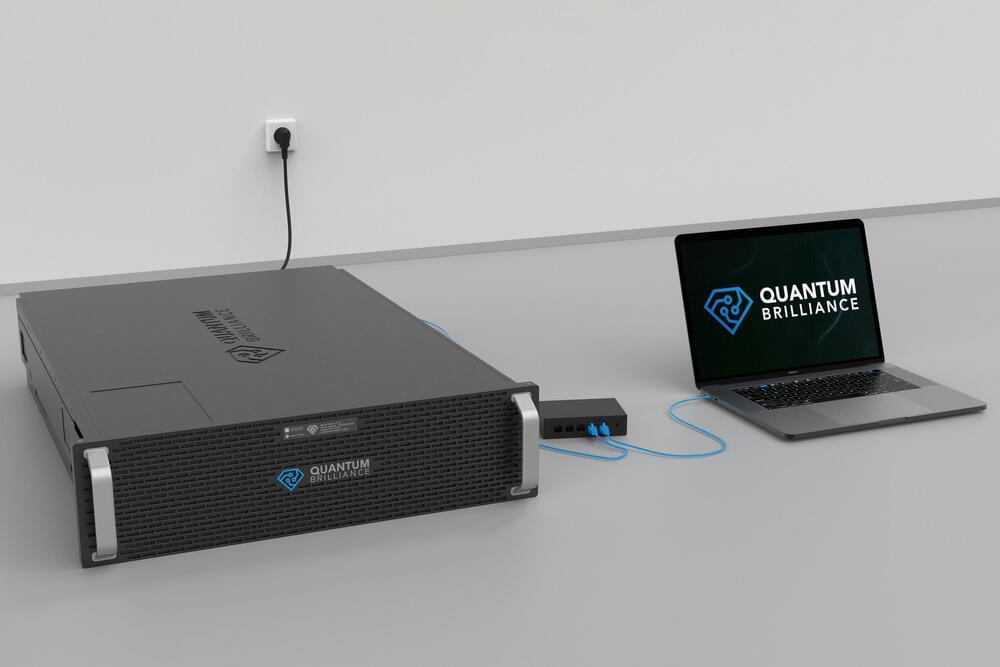
THEOGENESIS: Transdimensional Propagation & Universal Expansion ― a new book on quantum cosmology, computational physics and posthumanism by evolutionary cyberneticist Alex M. Vikoulov ― comes with a trailer you might find more than just interesting:
Release Date: October, 1 2021; Written by Alex M. Vikoulov; Publisher: Ecstadelic Media Group, Burlingame, California, USA; Format: Kindle eBook; Print Length: 211 pages; ISBN: 9781733426183; Discounted Pre-Order Price: $7.99.
*Pre-order eBook now with just 1 click and get your copy auto-delivered to your device on October 1 2021: https://www.amazon.com/dp/B09F858NBZ?tag=lifeboatfound-20?tag=lifeboatfound-20
#THEOGENESIS #QuantumCosmology #ComputationalPhysics #CyberneticTheoryofMind #posthumanism #cybernetics #theosophy #futurism
“Having invented the gods, perhaps we can turn into them.”
–Alan Harrington, The Immortalist.
Whereas the level of our posthuman syntelligence may be trillions upon trillions of times more powerful than it is today, nothing will prevent it to expand both in outer space and inner space. Isn’t it the nature of intelligence to acquire the ultimate knowledge — everything that can be known? A number of prominent physicists argue that the Technological Singularity is inevitable and the destiny of our Syntellect is to live forever, expand universally and finally reach the networked mind of universal proportions, living conscious universal superbeing.
If we extrapolate the past and current trends in increasing complexity and integration of self-aware neural networks leading to the Syntellect, we can ultimately envision a superintelligent entity encompassing our entire Universe, creating an infinite number of simulated universes, as well as many other spectacular emergent features. This picture bears a striking resemblance to the familiar concept of an immortal, omnipresent, omniscient, omnipotent, and omnibenevolent entity. Spiritually inclined rationalists may view this ongoing evolutionary process as one of ‘Theogenesis’. An interesting question is whether it has already happened elsewhere. We are now laying the foundation for the cognitive architecture of the Universal Mind. Many of our achievements in information engineering may persist forever and eventually become parts of the internal architecture of “God.”
- Excerpt from THEOGENESIS: Transdimensional Propagation & Universal Expansion, The Cybernetic Theory of Mind series by Alex M. Vikoulov, available for pre-order on Amazon: https://www.amazon.com/dp/B09F858NBZ?tag=lifeboatfound-20?tag=lifeboatfound-20
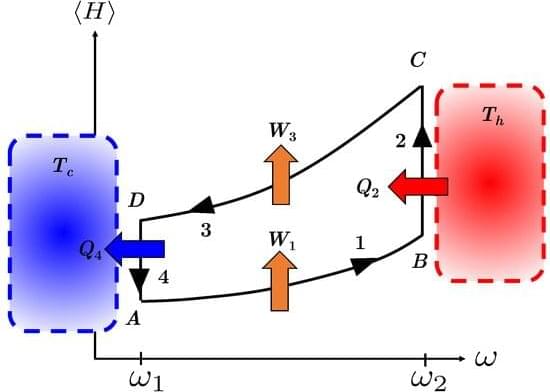
By harnessing quantum phenomena, quantum devices have the potential to outperform their classical counterparts. Here, we examine using wave function symmetry as a resource to enhance the performance of a quantum Otto engine. Previous work has shown that a bosonic working medium can yield better performance than a fermionic medium. We expand upon this work by incorporating a singular interaction that allows the effective symmetry to be tuned between the bosonic and fermionic limits. In this framework, the particles can be treated as anyons subject to Haldane’s generalized exclusion statistics. Solving the dynamics analytically using the framework of “statistical anyons”, we explore the interplay between interparticle interactions and wave function symmetry on engine performance.